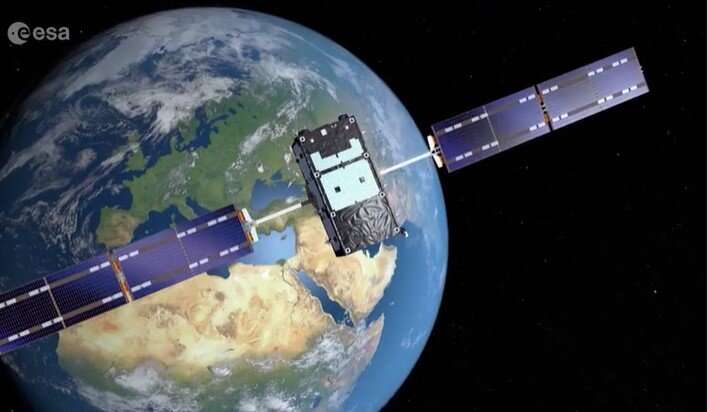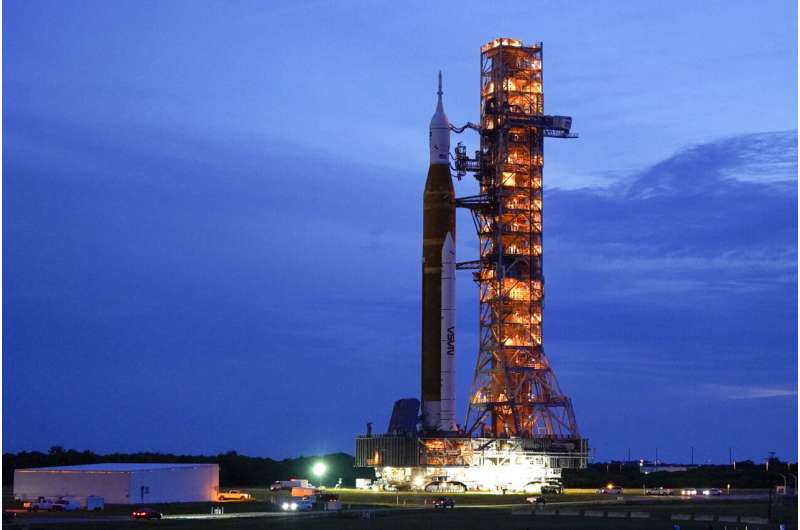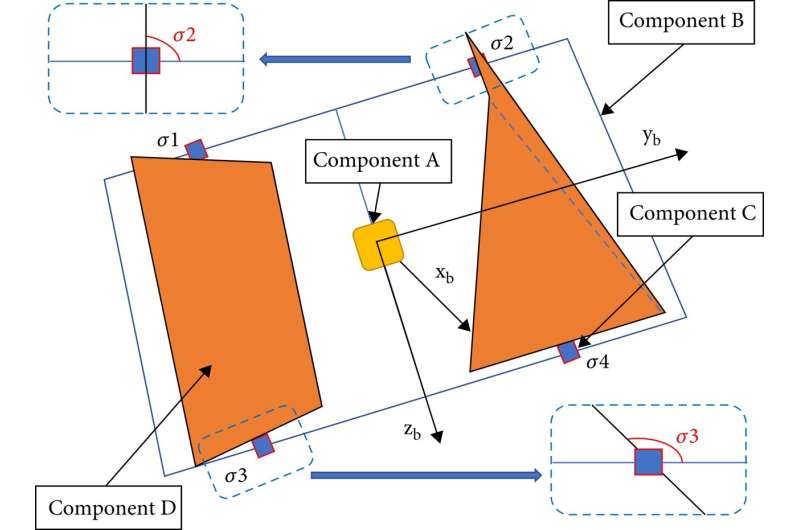
Copernical Team
Martian Sausages: Sols 3641-3642
 We are perched just below the "Marker Band," a thin dark band whose origin is unclear. As Michelle noted yesterday, we found some amazing textured float rocks in our workspace but were not in a good position to do contact science here, so we moved back a little in order to get it today.
These float rocks appear to have originated in the Marker Band, which can be seen running from lower lef
We are perched just below the "Marker Band," a thin dark band whose origin is unclear. As Michelle noted yesterday, we found some amazing textured float rocks in our workspace but were not in a good position to do contact science here, so we moved back a little in order to get it today.
These float rocks appear to have originated in the Marker Band, which can be seen running from lower lef Rocket Lab opens Archimedes Engine Test Stand at Stennis Space Center
 Rocket Lab USA, Inc. (Nasdaq: RKLB) has kicked off operations for testing the Archimedes engine with a ribbon cutting ceremony at NASA's historic Stennis Space Center in Mississippi. The Archimedes Test Complex will be home to engine testing for the 165,000 lbf engines to be used on Rocket Lab's reusable Neutron rocket.
The Archimedes Test Complex is located across a 1 million square foot
Rocket Lab USA, Inc. (Nasdaq: RKLB) has kicked off operations for testing the Archimedes engine with a ribbon cutting ceremony at NASA's historic Stennis Space Center in Mississippi. The Archimedes Test Complex will be home to engine testing for the 165,000 lbf engines to be used on Rocket Lab's reusable Neutron rocket.
The Archimedes Test Complex is located across a 1 million square foot China's mightiest liquid-propellant rocket engine passes key test
 Engineers in China's space industry conducted a key test of the country's most powerful liquid-propellant rocket engine on Saturday, marking a large stride in the development of a super-heavy carrier rocket.
Developed by the Academy of Aerospace Propulsion Technology in Xi'an of Shaanxi province, the 500-metric ton-thrust engine's first ignition test took place at the academy's testing fac
Engineers in China's space industry conducted a key test of the country's most powerful liquid-propellant rocket engine on Saturday, marking a large stride in the development of a super-heavy carrier rocket.
Developed by the Academy of Aerospace Propulsion Technology in Xi'an of Shaanxi province, the 500-metric ton-thrust engine's first ignition test took place at the academy's testing fac Chinese rocket re-enters Earth atmosphere uncontrolled over the Pacific Ocean
 Chinese rocket debris weighing 23 tons is crashing to Earth in an uncontrolled descent Friday.
U.S. Space Command tweeted a confirmation that the rocket re-entered the Earth's atmosphere over the south-central Pacific Ocean at 4:01 a.m. Friday.
The rocket was launched on Oct. 31 carrying the third and final module for the Tiangong space station. Much of the debris is expected to
Chinese rocket debris weighing 23 tons is crashing to Earth in an uncontrolled descent Friday.
U.S. Space Command tweeted a confirmation that the rocket re-entered the Earth's atmosphere over the south-central Pacific Ocean at 4:01 a.m. Friday.
The rocket was launched on Oct. 31 carrying the third and final module for the Tiangong space station. Much of the debris is expected to NASA rolls Artemis I mission rocket back to launch pad ahead of Nov. 14 launch
 NASA is making another run at launching the Artemis I spacecraft on its maiden voyage to the moon, rolling the $4.1 billion rocket back onto the launch pad Thursday at Kennedy Space Center after months of delays pushed the liftoff to Nov. 14.
The launch is scheduled a week from Monday at 12:07 a.m., but NASA was keeping an eye on a low-pressure system in the Caribbean that threatened to
NASA is making another run at launching the Artemis I spacecraft on its maiden voyage to the moon, rolling the $4.1 billion rocket back onto the launch pad Thursday at Kennedy Space Center after months of delays pushed the liftoff to Nov. 14.
The launch is scheduled a week from Monday at 12:07 a.m., but NASA was keeping an eye on a low-pressure system in the Caribbean that threatened to Iran says it successfully tested satellite launcher
 Iran announced Saturday the successful test flight of a rocket capable of propelling satellites into space, three months after launching a satellite with the help of Russia.
The United States has repeatedly voiced concern that such launches could boost Iran's ballistic missile technology, extending to the potential delivery of nuclear warheads.
But Iran insists it is not seeking nuclear
Iran announced Saturday the successful test flight of a rocket capable of propelling satellites into space, three months after launching a satellite with the help of Russia.
The United States has repeatedly voiced concern that such launches could boost Iran's ballistic missile technology, extending to the potential delivery of nuclear warheads.
But Iran insists it is not seeking nuclear Video: Testing Galileo for space

Galileo has grown to become Europe's single largest satellite constellation, and the world's most accurate satellite navigation system, delivering meter-level positioning to more than 3.5 billion users around the globe.
It all began at ESTEC's Test Center, Europe's largest satellite testing facility. This is where the very first positioning fix took place in March 2013, after the launch into orbit of the initial four IOV satellites. Following that, all 34 Galileo Full Operational Capability satellites also passed by ESTEC for their pre-flight testing.
This 3000 sq. m environmentally-controlled complex, operated and managed by European Test Services for ESA, hosts an array of test equipment able to simulate all aspects of spaceflight, from the noise and vibration of launch to the vacuum and temperature extremes of Earth orbit.
The production line at manufacturer OHB in Germany completed one new satellite every six weeks. After integration each satellite was then shipped to the ESTEC Test Center for a three-month test campaign, after which it would be accepted by the Agency and declared ready for flight. Some facilities have had to be adapted specifically for Galileo, and the ESTEC Test Center had to institute new security protocols because this was the first time that satellites with security restrictions were being tested at the site.
NASA's moon rocket returns to pad for next launch attempt

NASA's moon rocket is back on the pad for another launch attempt, following more repairs.
The 322-foot (98-meter) rocket departed its hangar in the middle of the night and completed the 4-mile (6.4-kilometer) trip shortly after sunrise Friday.
How do you keep a solar sail stable?

Solar sailing seems like a simple concept—instead of being pushed along by the wind, as in a typical sailing ship, a spacecraft can use highly reflective said to be pushed along simply by sunlight. But as with almost all engineering challenges, that technique is much easier said than done. Sunlight can head up one side of a sail more than another, causing the ship to rotate unexpectedly. Other unforeseen situations could arise that can also have catastrophic consequences for any mission using this propulsion technology.
Luckily, there is a way to account for those situations, though it involves a lot of math. Control theory is common in system design, and now researchers at Beihang University have devised a control scheme that they think could help minimize the risk to solar sails.
Control systems are relatively easy to understand in concept. A system has a series of inputs; in the case of a solar sail, those inputs might be the solar force pushing on it from the sun and maybe the gravity of any nearby object.
Week in images: 31 October - 4 November 2022

Week in images: 31 October - 4 November 2022
Discover our week through the lens
